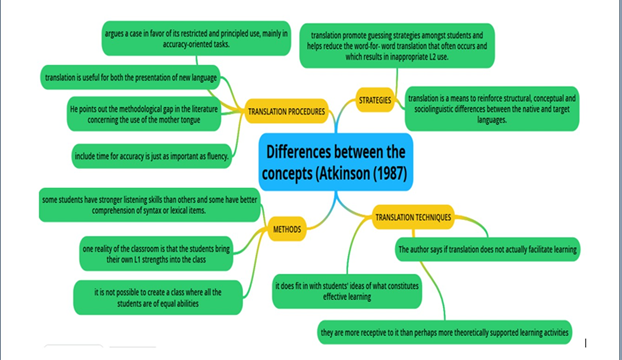Essay Victoria Gualteros
MARÍA VICTORIA GUALTEROS
INDIVIDUAL ESSAY
d. Kavaliauskienė
G. (2009) says that translation does not help students to develop communication
skills. Translation activities may be suitable for students who prefer
analytical or verbal-linguistic learning strategies
Translation in class.
English teachers try to use translation as a tool for
students to understand what he means, sometimes the English resources are not
enough if we talk about the language, and if at the same time we find more
translation than English. In Colombia the translation is not seen as something
positive for students and this statement is true because that is the method
that most teachers used to have in their classes, and that is the reason why
many people did not learn English with the traditional form. But anyway translating
is necessary for native Spanish speakers, due to we tend to attach every single
word to Spanish and that is something that comes like a chip that does not let
us think in English.
Firstly it is important to have the concept of
translation clear, "Translation is the general term referring to the
transfer of thoughts and ideas from one language (source) to another
(target)" (p.l). Now to make emphasis on the communication skills
(speaking and writing), it is essential that students understand that we do not
speak English in the way we do it in Spanish, that the grammar, the vocabulary
and the order word change a lot, bearing this in mind here is where English
really begins. Writing is specially one of the most difficult skills to develop
because it requires grammar and to get separated from our maternal language. Moreover
there are some verbal linguistic strategies that can be applied in order to
find a wide usage of translation into this skills. Verbal linguistic students
are especially interested in the words they hear, for this reason they find
more interesting learning through Translation because they can hear and
recognize the sounds of the words, but what they really care about is the
written and the translation. In this concept translation does not become into
an enemy for English teachers owing to students must know what it means.
This method has taken a boring, difficult and irrelevant
position thus the traditional system tells us that to learn a new word it was
necessary to search in a dictionary and get the translation, but actually most
people do not use a dictionary because they have learnt that writing is not
translating word by word. But how does it work into a class? Native speaker
have the need of knowing every single new word, and sometimes by giving a short
explanation of it in English can help, but some other they want to know what it
is exactly in their maternal language. And a person who leans toward a verbal/linguistic
learning style will tend to pick up new words easily and have a large
vocabulary. However, the idea of abandoning the native tongue is too stressful
to many learners, who need a sense of security in the experience of learning a
foreign language.
And although all of this can be seen as something useful
when learning a new language it is important to take into account that
Translation develops three qualities essential to all language learning:
accuracy, clarity, and flexibility (Ross, 2000:61). And at any point this
method also works for learning more and improving language skills.
To
conclude Translation can help students to develop a wider and deeper vocabulary
skills, they will be able to understand texts and they are able to improve
their writing, and finally the students’ autonomously generated reading
comprehension exercises, summary writing and back-translation activities help
raise learners’ awareness of differences between English and the mother tongue
and facilitate linguistic development.
Mind map.





Comentarios
Publicar un comentario